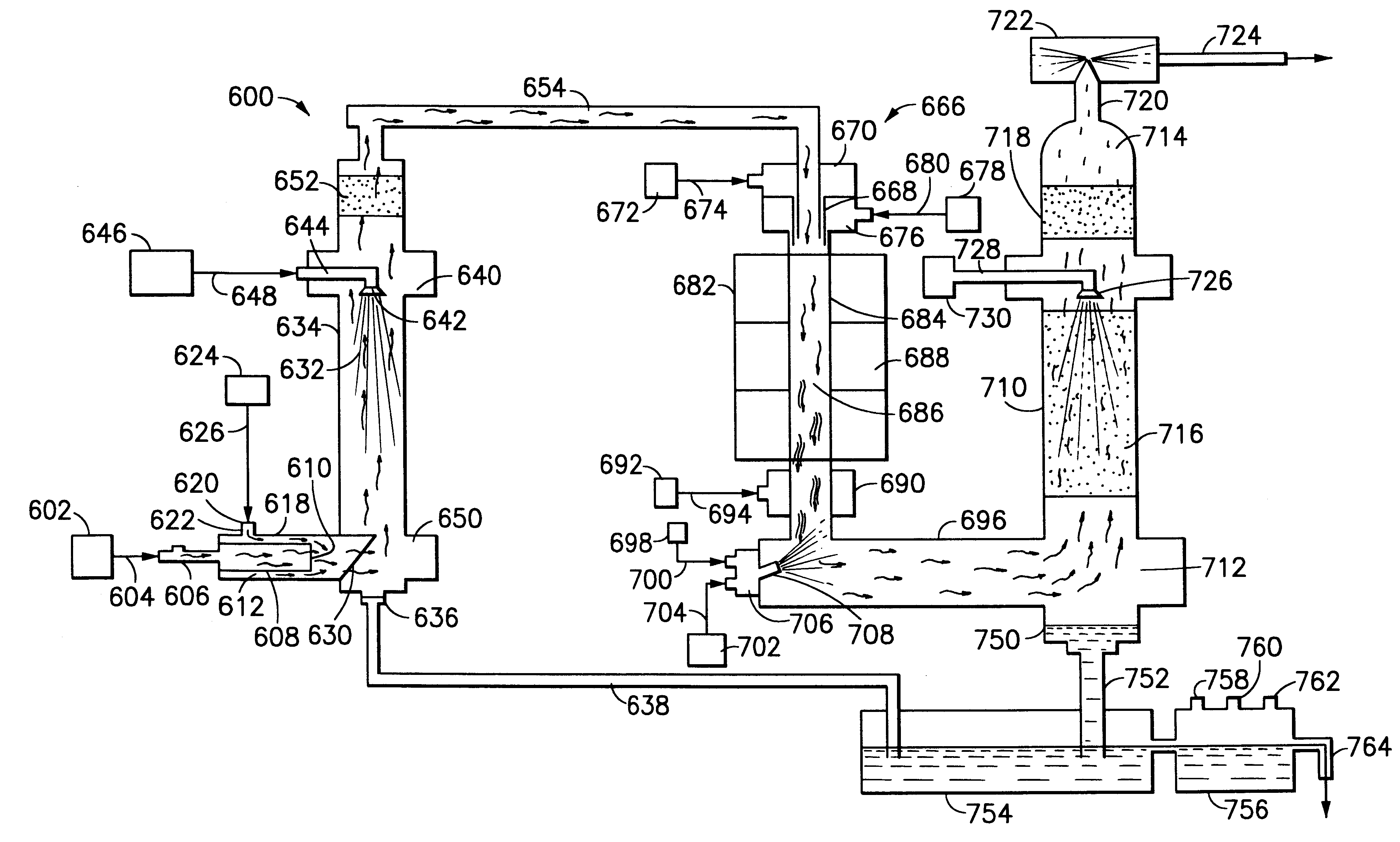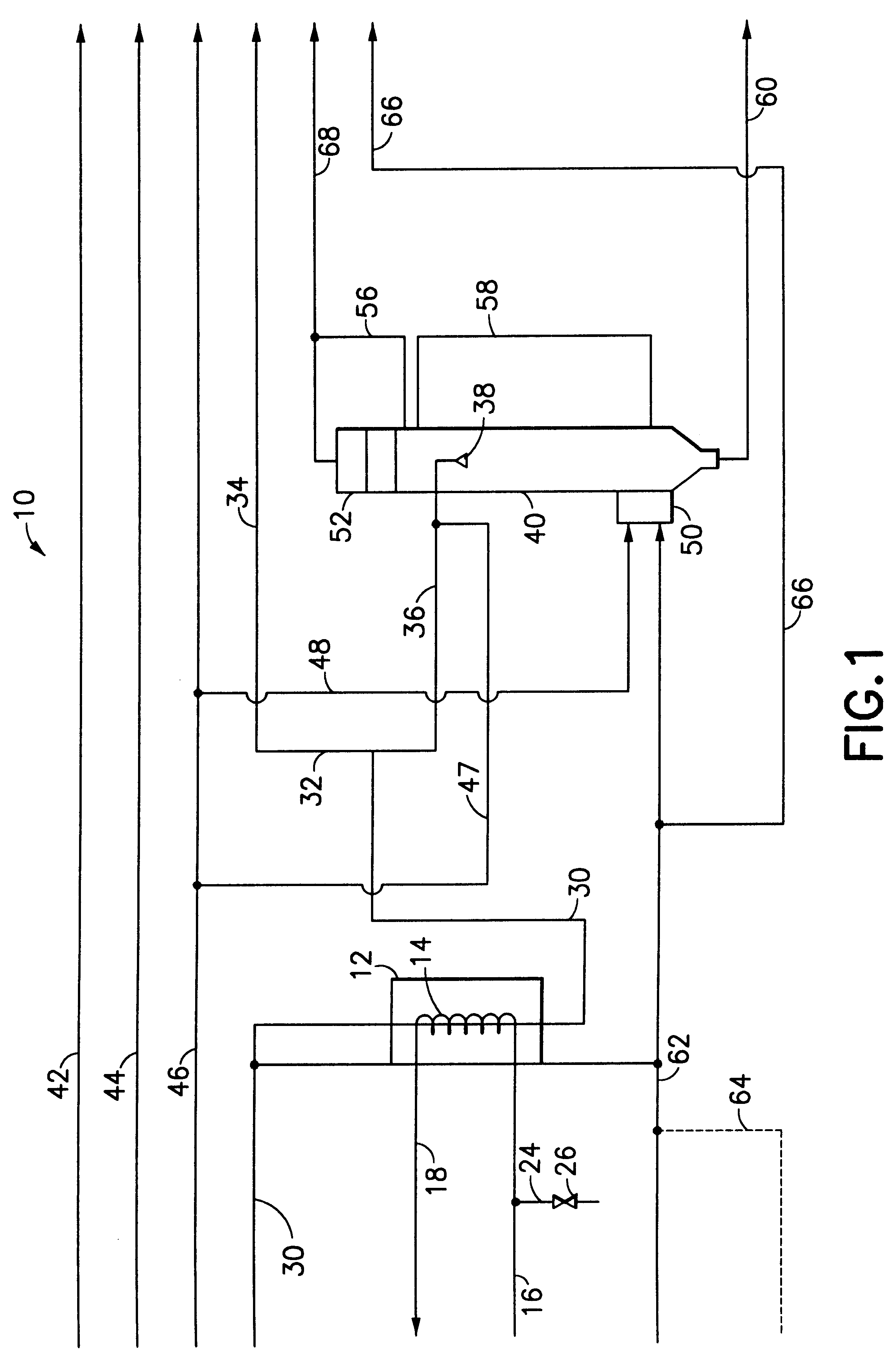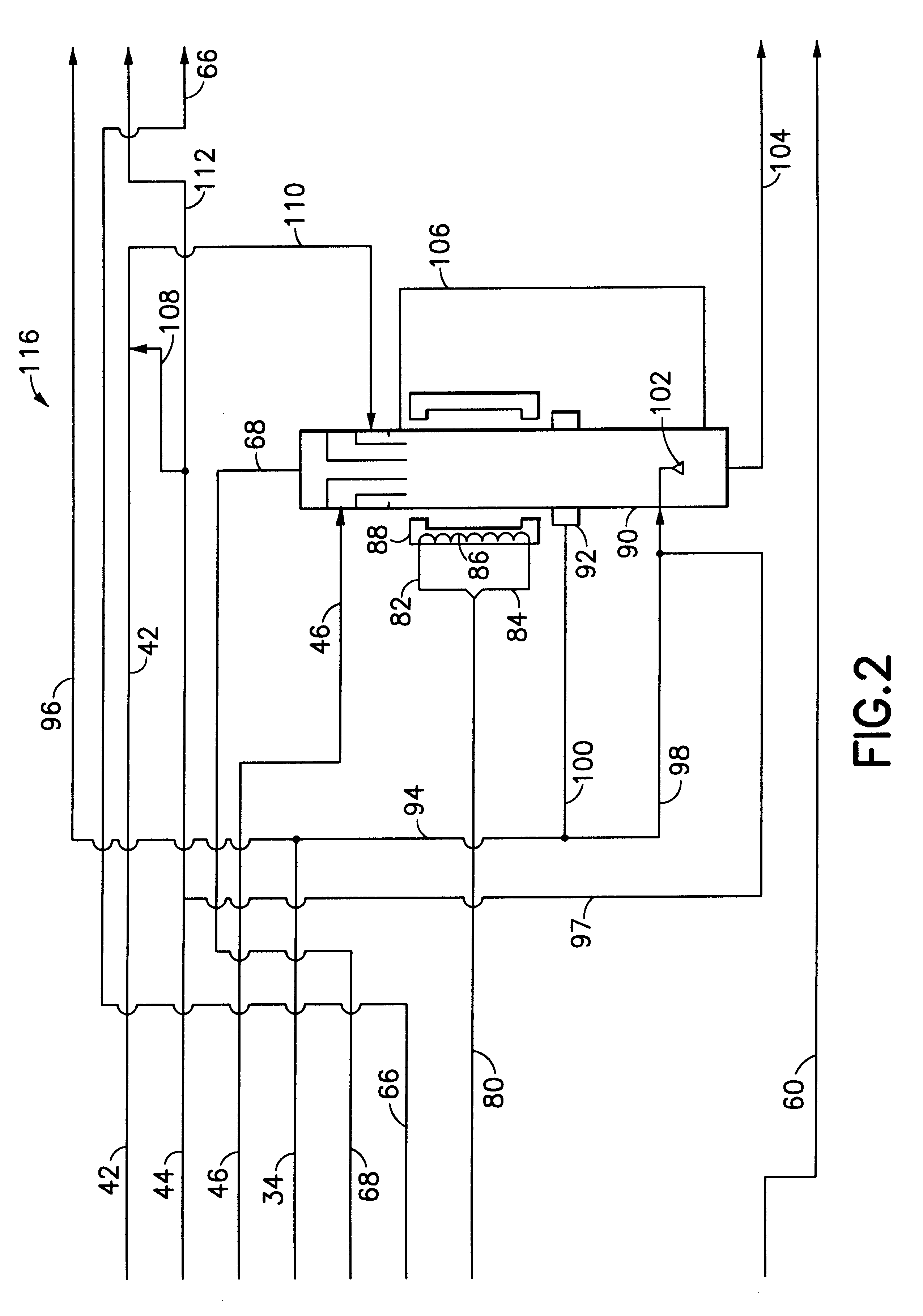Additionally, while these
original equipment manufacturer-integrated effluent gas stream treatment systems clearly can, in certain applications, have advantages over single unit operational systems, typically, these
integrated systems, which may for example carry out unit operations of oxidation,
quenching, and scrubbing, suffer from various deficiencies, including:
particulates clogging in the respective sections as well as the inlet region of the oxidizer section, generation of
particulates in the oxidation section, poor scrubbing of acid gases in the
scrubber section, high consumption of water for
acid gas and particulate scrubbing, and condensation of saturated off-gases from the scrubber section resulting in collection and concentration of aqueous mixtures with acids.
These inlet clogging problems may require the incorporation of
plunger mechanisms or other solids removal means to keep the inlet free of solids accumulations, however these mechanical fixes add considerable expense and labor to the system.
In other instances, the inlet clogging problems may be systemic and require periodic preventative maintenance to keep the inlet free of solids accumulations.
Such maintenance, however, requires shut-down of the system and loss of productivity in the manufacturing facility.
The existing integrated point of use gas effluent treatment systems may also experience problems in
plant facilities which have difficulty in treating the
wastewater from their wet scrubbing processes.
A number of plants may have difficulties processing the
fluorine (F.sup.-) species in the
wastewater generated from these point of use systems, or more generally, in processing
wastewater deriving from the gas effluent treatment system per se.
The water scrubber and quench portions of the integrated system can also have problems with clogging when quality of the feed water available to the process facility is poor, a typical condition in the Southwest United States.
Lack of readily available water, high water costs, and high disposal costs for discharged wastewater are also significant problems in many localities.
While effective in preventing the scrubber and quench plugging, such solution involves a very high
cost of ownership associated with the substantial costs of high quality deionized water.
In the scrubbing operation, poor scrubbing of acid gases in scrubber towers can be due to the small flowrates that are processed through these systems.
The diameters of scrubber towers processing such small flowrates are correspondingly small, which when combined with the use of conventional large
diameter packing can result in a packing element
diameter to column
diameter which is excessively high and results in large wall effects in the scrubber
tower.
Such scrubber towers as a result require large water flows, which in turn can cause channeling, flooding and slugging, with pockets of process
gas passing untreated through the scrubber system.
Due to the poor scrubbing of these systems,
corrosion in the ducting downstream of these systems is commonly observed, which is due to condensation of the untreated off-gases from the scrubber.
When
halide gases are being treated in the effluent stream, the off-gases from the scrubber
tower will as a result of the poor scrubbing performance of the scrubber contain unscrubbed
halogen content.
1. The provision of a totally integrated gas effluent stream treatment system in a unitary cabinet configuration including a non-clogging inlet, pre-scrubber, oxidizer, wet / dry interface, quench, post-scrubber and motive means.
2. The use of a pre-treatment subsystem for
hydrogen fluoride absorption. Such pre-treatment subsystem is in essence utilized as a particulate pre-removal system by removing particulate precursors rather than trying to remove fine
particulates formed during the
oxidation process.
3. The provision of a wet / dry interface of a slit / hole injection type or of a porous type interface, which can substantially reduce water usage and render system leveling unnecessary.
5. The provision of sub-cooling in the water scrubber (together with other features hereinafter more fully described) yielding a condensationless or minimum-condensation design and enhanced thermophoretic
acid gas and particulate scrubbing; additionally, an ejector for fluid
discharge may be employed to render the effluent gas treatment system "invisible" to the exhaust line of the processing system, or such
discharge means may be employed to increase the draw on the upstream process unit (e.g., semiconductor manufacturing tool) if necessary.
6. The use of a
demister mesh as a packing element in the scrubber column. Such
demister mesh can substantially reduce wall effects in scrubber columns of small diameter.
Mass transfer and
heat transfer in the scrubber column as a result are comparable to or better than scrubber column performance with standard commercially available random packings, and
demister mesh-containing scrubber columns achieve relatively low pressure drop. The void fraction at the top of the scrubber column can also be flexibly designed to constitute the scrubber column as a good particle collector; random packings are not as flexible and do not readily permit the flexibility achievable with demister mesh-containing scrubber columns.
7. The use of
heat transfer enhancement inserts in the oxidizer to tailor the effluent gas stream treatment system to applications requiring varying thermal fluxes in the overall operation of the system.
8. The recycle of a saturated H.sub.2 O / exhaust stream from the quench of an oxidizer unit in the effluent gas treatment system to the inlet of the oxidizer unit provides a low cost
hydrogen source for oxidation of perfluorocarbons (PFCs).
9. The addition of chemicals into the pre-scrubber may be employed to alter the characteristics of the materials to be scrubbed. An illustrative example is the addition of NH.sub.3 to
tungsten hexafluoride effluent to form
ammonium tungstate, thereby yielding a material with elevated
solubility for scrubbing removal thereof.
 Login to View More
Login to View More 


